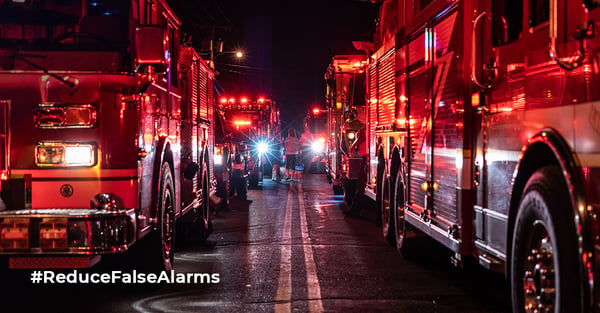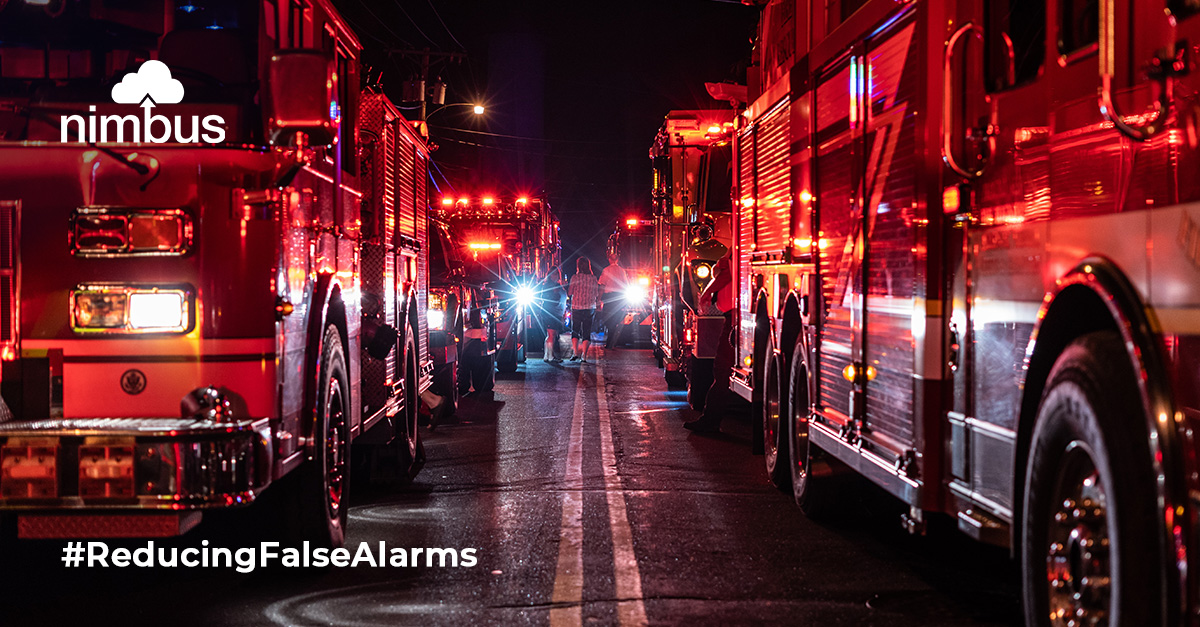The potential of remote fire alarm management in reducing false alarms
In the field of fire safety, the fire alarm signal is a critical connection between fire systems and the necessary rapid response to prevent...

Fire systems play a pivotal role in the safety and security of commercial and public buildings across the UK. These systems are designed to detect and warn occupants about potential fire threats. However, as efficient as they are, they have recently come under scrutiny due to a high frequency of false alarms, to the extent that fire brigades are now considering a change in approach, mandating human confirmation before deploying resources to a fire alert.
The data paints a clear picture, leading to widespread reviews of the traditional approach, which prioritised an immediate response to every alarm. Instead, driven by cuts in the number of units, personnel and fire stations, organisations such as the Scottish Fire and Rescue Service and the London Fire Brigade are taking a far harder line on most building types, with exceptions for high-risk sites such as residential, schools and hospitals.
In the year between April 2022 and March 2023, the London Fire Brigade attended a total of 47,000 false alarm calls. Each call signifies a mobilisation of resources, including workforce, equipment, and time. Beyond the mere numbers, these false alarms come with a ripple of implications.

One such implication is the ‘crying wolf’ effect. Drawing from the fable where repetitive false alarms lead to a potential disaster due to desensitisation, this effect can manifest in real-life scenarios. With alarms sounding off without genuine threats, occupants might begin to ignore them or, worse, treat them with casual indifference over time. This compromises safety and diminishes the very purpose of having a fire system in place.
Moreover, each alarm, false or not, demands urgency for emergency responders. Responding to these alarms often requires swift manoeuvres, at times putting both the responders and the general public at potential risk. And for what? A false alarm?
The tangible and intangible resources wasted in these endeavours are considerable. Financial costs aside, the emotional toll on both the public and responders, the wear and tear on equipment, and the potential delay in addressing real emergencies cannot be overlooked.
In this evolving landscape of fire safety, the question that emerges is clear: How do we harness technology to mitigate the challenges posed by false alarms while ensuring that genuine threats do not go unnoticed? The answer might lie in pioneering innovations like remote fire system management.
In an era where efficiency and digital capabilities are paramount, fire safety is advancing with the integration of remote fire system management. These systems, underpinned by real-time monitoring, offer a more surgical approach to identifying genuine emergencies distinct from false alarms.
The primary benefit of such technology is the tangible reduction in false alarms. The ability to accurately verify the nature of the alarm allows for a more strategic deployment of resources, cutting back on unnecessary costs associated with attending false alarms. This isn’t merely a fiscal advantage—it reduces the potential hazards that come with unnecessary emergency responses, such as road traffic incidents during rapid deployments.
However, the advantages go beyond resource management. The cumulative time and resources saved from sidestepping false alarms can be redirected to vital tasks, from in-depth operational training to proactive community engagement. This efficiency doesn’t just enhance the performance metrics of fire brigades; it plays a pivotal role in elevating overall safety standards in communities.
This new approach translates to significant cost savings for building owners and occupants. Fewer false alarms mean fewer disruptions, translating to increased productivity and potentially fewer penalties related to false alarms. Furthermore, the peace of mind that stems from having a responsive, reliable and accurate system in place cannot be overstated. It leads to decreased stress for building users, knowing that alarms are more likely to represent genuine risks and not routine false alarms.

In the context of remote fire system management, Nimbus stands out as a noteworthy innovation. Designed to seamlessly integrate with fire panels from leading manufacturers, Nimbus offers a holistic solution to the challenges posed by traditional fire systems.
For system integrators, Nimbus promises a simplified maintenance regime. The solution can be easily incorporated into existing fire systems and is straightforward to implement in new installations. This streamlines both maintenance and commissioning processes, ensuring systems are always up-to-date and compliant.
Building owners and facilities managers, often juggling the complexities of multiple locations, stand to benefit significantly. Nimbus offers a consolidated platform, ensuring that fire safety equipment and systems are always operational, thereby minimising risks and guaranteeing compliance.
Central to the Nimbus offering is the Nimbus Portal—a cloud-hosted platform that serves as the epicentre for all logged events. This portal isn’t just a passive logging system. It allows administrators to customise event notifications, ensuring that compliance requirements are met. Moreover, with its robust reporting capabilities, users can dive deep into the data, gleaning insights and optimising their fire safety protocols accordingly.

The fire safety landscape is undergoing a significant transformation, with technology playing an increasingly pivotal role. As false alarms continue to drain resources and erode confidence, there’s a growing need for innovative solutions to refine and improve how fire systems operate.
The wave of technological advancements in fire safety, represented by tools like Nimbus and other remote fire system management platforms, underscores an evolving and adapting industry. These tools aren’t just about responding to fires more effectively; they’re about creating an environment where fire risks are minimised and false alarms are a rarity rather than a common disruption.
But the evolution isn’t solely technological. It’s a mindset shift. It’s about recognising that the traditional ways of managing fire safety can be supplemented and enhanced. In the face of challenges like high false alarm rates, it’s clear that a proactive, forward-thinking approach is not just beneficial but essential. For building managers, property owners, and fire safety professionals, now is the time to embrace the technology and expertise that will define the future of fire safety.


In the field of fire safety, the fire alarm signal is a critical connection between fire systems and the necessary rapid response to prevent...

Nimbus, our multi-brand remote fire panel monitoring system, connects you to all your fire panels anywhere, anytime.

Nimbus provides building managers and fire protection specialists with full visibility of critical fire protection systems across your entire...